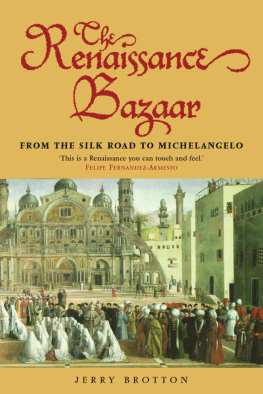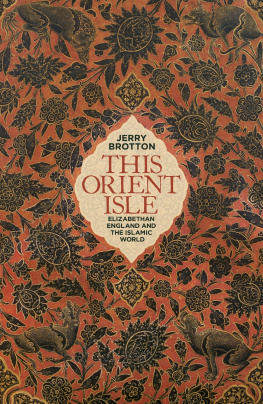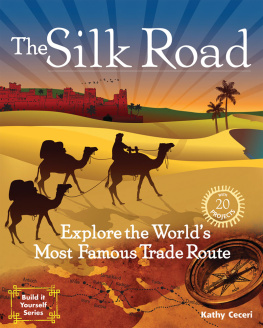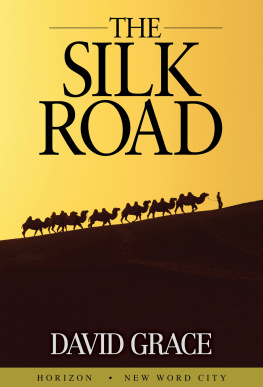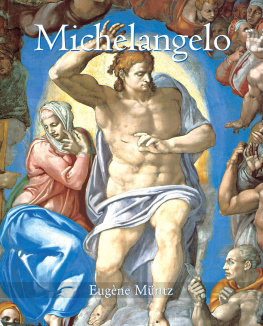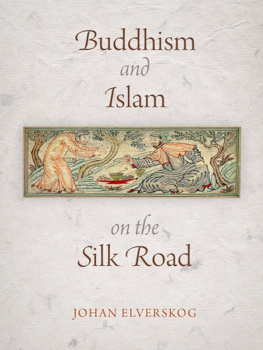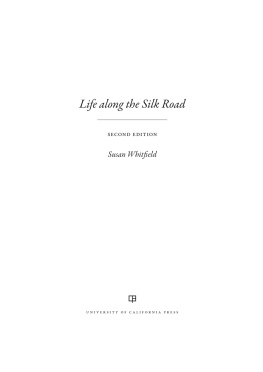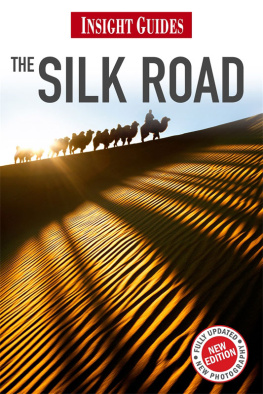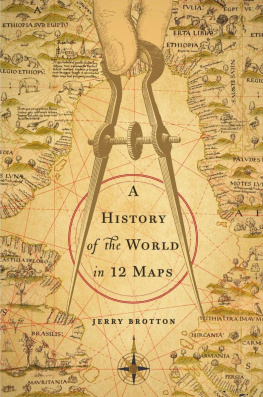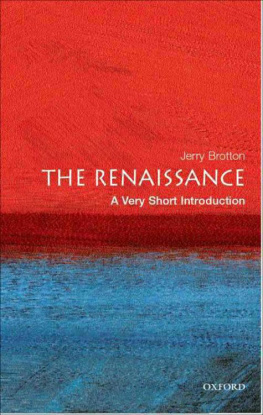Brotton - The Renaissance bazaar: from the Silk Road to Michelangelo
Here you can read online Brotton - The Renaissance bazaar: from the Silk Road to Michelangelo full text of the book (entire story) in english for free. Download pdf and epub, get meaning, cover and reviews about this ebook. City: Europe;Oxford, year: 2010;2002, publisher: Oxford University Press, genre: Romance novel. Description of the work, (preface) as well as reviews are available. Best literature library LitArk.com created for fans of good reading and offers a wide selection of genres:
Romance novel
Science fiction
Adventure
Detective
Science
History
Home and family
Prose
Art
Politics
Computer
Non-fiction
Religion
Business
Children
Humor
Choose a favorite category and find really read worthwhile books. Enjoy immersion in the world of imagination, feel the emotions of the characters or learn something new for yourself, make an fascinating discovery.
- Book:The Renaissance bazaar: from the Silk Road to Michelangelo
- Author:
- Publisher:Oxford University Press
- Genre:
- Year:2010;2002
- City:Europe;Oxford
- Rating:3 / 5
- Favourites:Add to favourites
- Your mark:
- 60
- 1
- 2
- 3
- 4
- 5
The Renaissance bazaar: from the Silk Road to Michelangelo: summary, description and annotation
We offer to read an annotation, description, summary or preface (depends on what the author of the book "The Renaissance bazaar: from the Silk Road to Michelangelo" wrote himself). If you haven't found the necessary information about the book — write in the comments, we will try to find it.
Brotton: author's other books
Who wrote The Renaissance bazaar: from the Silk Road to Michelangelo? Find out the surname, the name of the author of the book and a list of all author's works by series.
The Renaissance bazaar: from the Silk Road to Michelangelo — read online for free the complete book (whole text) full work
Below is the text of the book, divided by pages. System saving the place of the last page read, allows you to conveniently read the book "The Renaissance bazaar: from the Silk Road to Michelangelo" online for free, without having to search again every time where you left off. Put a bookmark, and you can go to the page where you finished reading at any time.
Font size:
Interval:
Bookmark:

Dr Jerry Brotton is a Lecturer in English at Royal Holloway, University of London. He is the author of Trading Territories: Mapping the Early Modern World (Reaktion, London, 1997 and Cornell University Press, 1998), and with Lisa Jardine, Global Interests: Renaissance Art between East and West (Reaktion, London, 2000).
From the Silk Road to Michelangelo

Jerry Brotton

This book has been printed digitally and produced in a standard specification in order to ensure its continuing availability

Great Clarendon Street, Oxford OX2 6DP
Oxford University Press is a department of the University of Oxford.
It furthers the Universitys objective of excellence in research, scholarship, and education by publishing worldwide in
Oxford New York
Auckland Cape Town Dar es Salaam Hong Kong Karachi
Kuala Lumpur Madrid Melbourne Mexico City Nairobi
New Delhi Shanghai Taipei Toronto
With offices in
Argentina Austria Brazil Chile Czech Republic France Greece
Guatemala Hungary Italy Japan South Korea Poland Portugal
Singapore Switzerland Thailand Turkey Ukraine Vietnam
Oxford is a registered trade mark of Oxford University Press in the UK and in certain other countries
Published in the United States by Oxford University Press Inc., New York
Jeremy Brotton 2002
The moral rights of the author have been asserted
Database right Oxford University Press (maker)
Reprinted 2010
All rights reserved. No part of this publication may be reproduced, stored in a retrieval system, or transmitted, in any form or by any means, without the prior permission in writing of Oxford University Press, or as expressly permitted by law, or under terms agreed with the appropriate reprographics rights organization. Enquiries concerning reproduction outside the scope of the above should be sent to the Rights Department, Oxford University Press, at the address above
You must not circulate this book in any other binding or cover
And you must impose this same condition on any acquirer
ISBN 978-0-19-280265-1
If there is one moment at which most people define the birth of modern European civilization, it is surely the period between 1400 and 1600 known as the Renaissance. The Renaissance Bazaar argues that modern Europe emerged in this period by competing and exchanging ideas and commodities with its eastern (and predominantly Islamic) neighbours. These eastwest transactions laid the bases for the great art and culture that we now associate with the Renaissance. They also reveal that Europe emerged in close relation rather than stark opposition to the cultures and communities it has often come to demonize and label as underdeveloped and uncivilized.
Scholars across the humanities are already developing this approach to the Renaissance. However, The Renaissance Bazaar is the first book to synthesize these developments, and suggest how an understanding of the impact of the east transforms our understanding of the Renaissance. My own collaborative work with Lisa Jardine, alongside the writings of scholars like Glru Necipolu, Nabil Matar, Joan Pau Rubis, Deborah Howard, and Julian Raby, has started to reconsider the ways in which the Renaissance looks very different when viewed from beyond the bounds of Europe. Rather than signalling an end to the study of the Renaissance, this book suggests that exciting discoveries still lie ahead.
I would like to thank Matt Birchwood, Mat Dimmock, Margaret Ferguson, Don and Sarah Holmes, Adam Lowe, Karin Pibernik, Evelyn Welch, and, at Oxford, Ali Chivers for their help and suggestions in the completion of this book. No one could wish for a better mentor and collaborator than Lisa Jardine. She was instrumental in encouraging me to write this book, and persistently prevented me from being hypnotized by the seductive myths of the Renaissance with her characteristic verve and ingenuity. I look forward to further collaborations and voyages of discovery with her on an even grander scale.
This book is dedicated to my most sceptical critic, Rachel Holmes. She has read every page, questioned every assumption, and demanded clarity at every point. The result is a much better book than I could have written without her, although any mistakes and omissions remain my own. I hope that she now agrees with me that the Renaissance is worth the effort.
The Renaissance Bazaar describes the historical period starting in the early 15th century when eastern and western societies vigorously traded art, ideas, and luxury goods in a competitive but amicable exchange that shaped what we now call the European Renaissance. The eastern bazaar is a fitting metaphor for the fluid transactions that occurred throughout the 15th and 16th centuries, when Europe began to define itself by purchasing and emulating the opulence and cultured sophistication of the cities, merchants, scholars, and empires of the Ottomans, the Persians and the Egyptian Mamluks. The flow of spices, silks, carpets, porcelain, majolica, porphyry, glassware, lacquer, dyes, and pigments from the eastern bazaars of Muslim Spain, Mamluk Egypt, Ottoman Turkey, Persia, and the Silk Road between China and Europe provided the inspiration and materials for the art and architecture of Bellini, van Eyck, Drer, and Alberti. The transmission of Arabic understanding of astronomy, philosophy, and medicine also profoundly influenced thinkers and scientists like Leonardo da Vinci, Copernicus, Vesalius, and Montaigne, whose insights into the workings of the human mind and body, as well as the individuals relationship to the wider world, are often still seen as the foundation of modern science and philosophy. It was the complex impact of these exchanges between east and west that created the culture, art, and scholarship that have been popularly associated with the Renaissance.
Since the 11th-, 12th-, and 13th-century European Crusades in the Holy Land, Christians and Muslims had openly traded and exchanged goods and ideas despite religious antagonism and military conflict. Towards the end of the 13th century the Venetian merchant Marco Polo had gone even further, travelling as far as China in search of new commercial possibilities. By the 14th century, the political and commercial worlds of both Europe and Asia were undergoing profound changes. Europe found itself trading on equal terms with powerful empires in Egypt, Persia, and Turkey. Two examples of these exchanges set the tone of this book, and capture the impact of the east upon 15th- and 16th-century Europe. In 1487 the Egyptian Mamluk Sultan Qit By sent a magnificent embassy to Florence in an attempt to establish a commercial agreement intended to cut the rival Ottoman Empire out of the Italian trade. The secretary to Florences ruler Lorenzo de Medici recalled with astonishment that the Egyptian retinue arrived with riches rarely seen in Italy. These included balsam, musk, benzoin, aloeswood, ginger, muslin, thoroughbred Arabian horses, and Chinese porcelain. The impact of these luxurious objects upon Italian life was recorded in the paintings and architectural details of Masaccio, Filarete, and Mantegna, who all incorporated exotic animals, Islamic script, and the lustre of lacquered wood, porphyry, patterned silk, and intricately designed carpets into their paintings. Leonardo had already been so impressed by Qit Bys reputation that in 1484 he wrote a series of reports to Kait-Bai on scientific and architectural initiatives he proposed to undertake in Turkey. Leonardo clearly believed that wealth, patronage, and political power lay in the courts to the east of mainland Europe.
Font size:
Interval:
Bookmark:
Similar books «The Renaissance bazaar: from the Silk Road to Michelangelo»
Look at similar books to The Renaissance bazaar: from the Silk Road to Michelangelo. We have selected literature similar in name and meaning in the hope of providing readers with more options to find new, interesting, not yet read works.
Discussion, reviews of the book The Renaissance bazaar: from the Silk Road to Michelangelo and just readers' own opinions. Leave your comments, write what you think about the work, its meaning or the main characters. Specify what exactly you liked and what you didn't like, and why you think so.

